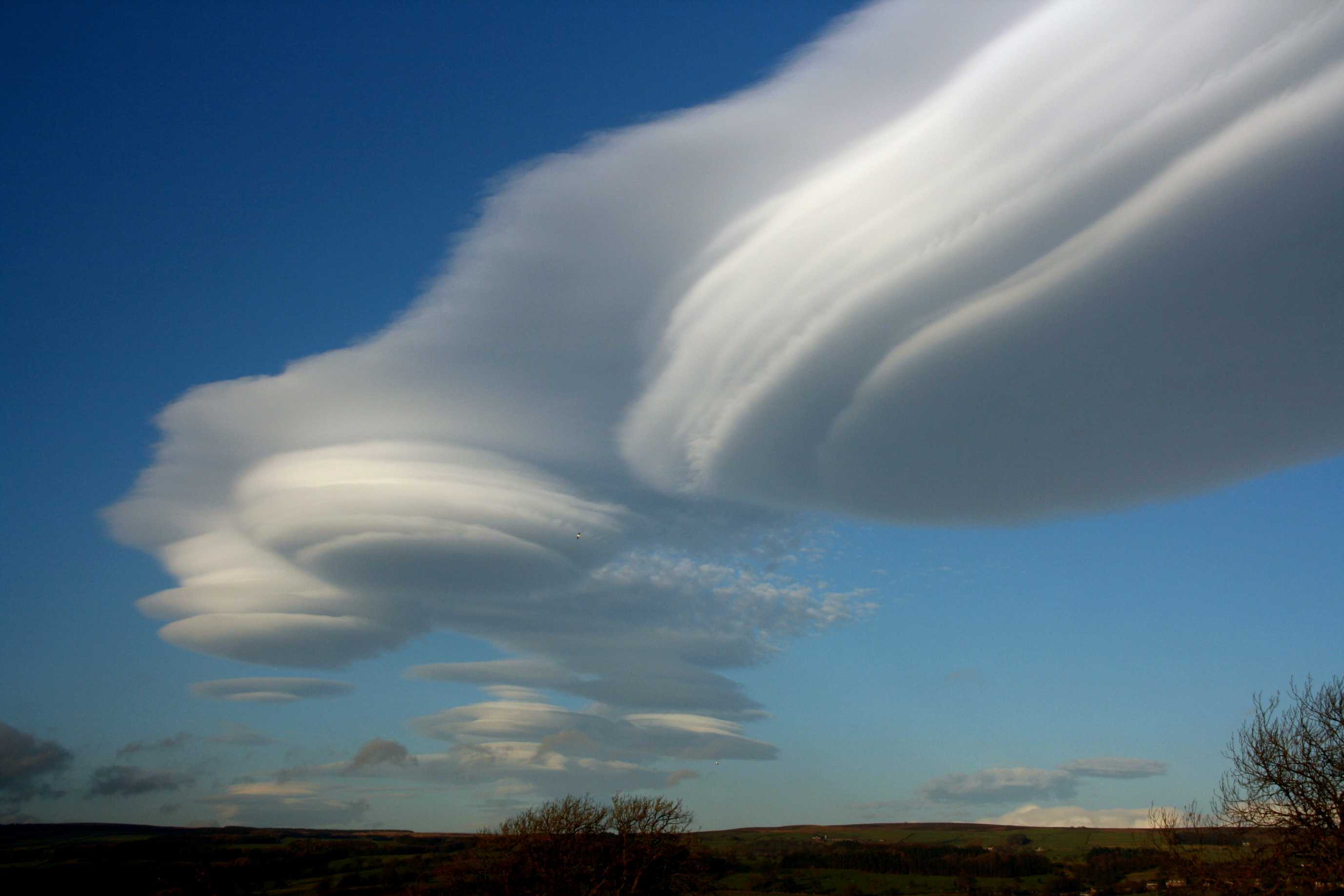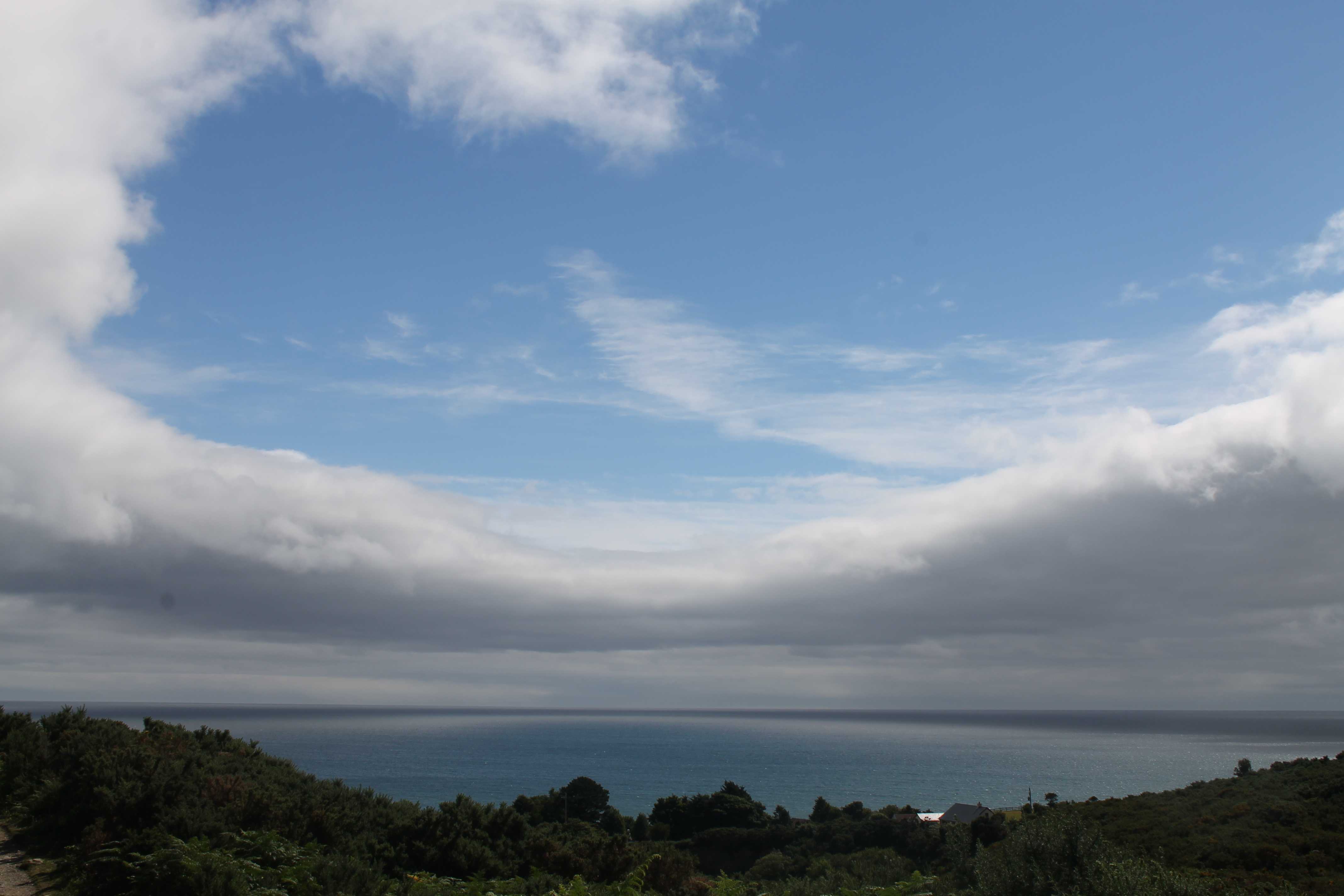Introduction
(Section 2.4.1)In airflow crossing a hill, mountain or ridge, orographic clouds may occur below, at or above the top of the obstacle. Orographic clouds in the troposphere may differ notably from the usual characteristics of any of the 10 cloud genera; however, tropospheric orographic clouds are always classified as one of these genera.
Orographic influence on airflow leads to the development or enhancement of clouds on the windward side, which generally dissipates on the leeward side due to downward motion.
A cross-barrier flow may generate mountain waves on the leeward side, depending on atmospheric conditions and the characteristics of the topography. Sometimes, the oscillations of air on the leeward side form lenticular clouds on the crests of such waves, which is a signature of airflow alteration due to relief.
The most common orographic clouds belong to the genera Altocumulus, Stratocumulus, and Cumulus.
It is important to observe clouds in mountainous terrain because they may provide an indication of changes in the weather that could have implications on safety.





